-
Notifications
You must be signed in to change notification settings - Fork 0
Home
For the first time I did put my hands in an ethernet-based project. It is made of 5 nucleo boards connected together via an ethernet switch:
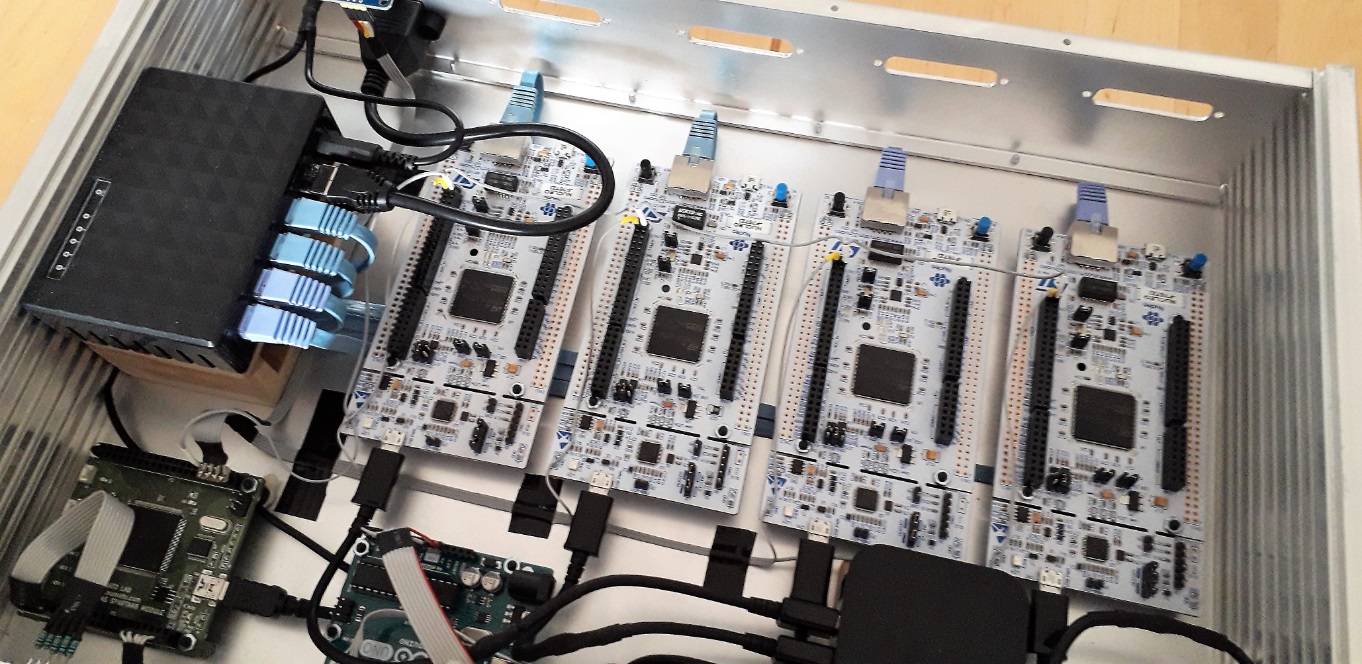
My first idea for tuning up this system was to spy its network with Wireshark.
I then realized that a switch is not a hub: when I connect my laptop running Wireshark to a free slot of the switch, it just receives nothing!
After some googling, I understood that the solution is to insert an ethernet stub, a.k.a. network tap, in the link to analyze. As always, it is a shame to put a project on hold because of a missing tool. Hence, I decided to take a look at my local DIY store. Good news: in the domestic Ethernet cabling department, they offer a RJ45 female / female adapter. The regular role of such device is to connect two cables together to get one longer. This thing costs less than 3 euros, I bought it.
In order to hack my adapter and transform it into a tap, I first opened it in two identical parts and cut the interconnexion wires. I also identified the colors of said wires. Caution: the colors doesn't match the standard.
I will also have to rip an ethernet cable for installing the stub on it.
The following diagram summarizes how to wire the tap. The colors of the RJ45/RJ45 adapter wires (black/yellow) are those of mine. They probably differ on other brands.
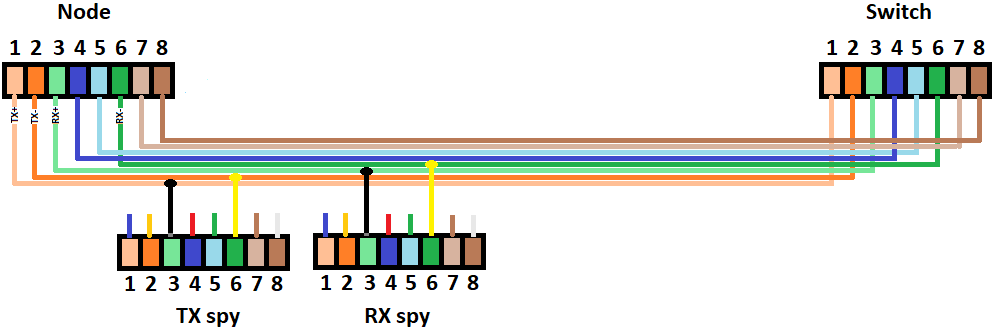
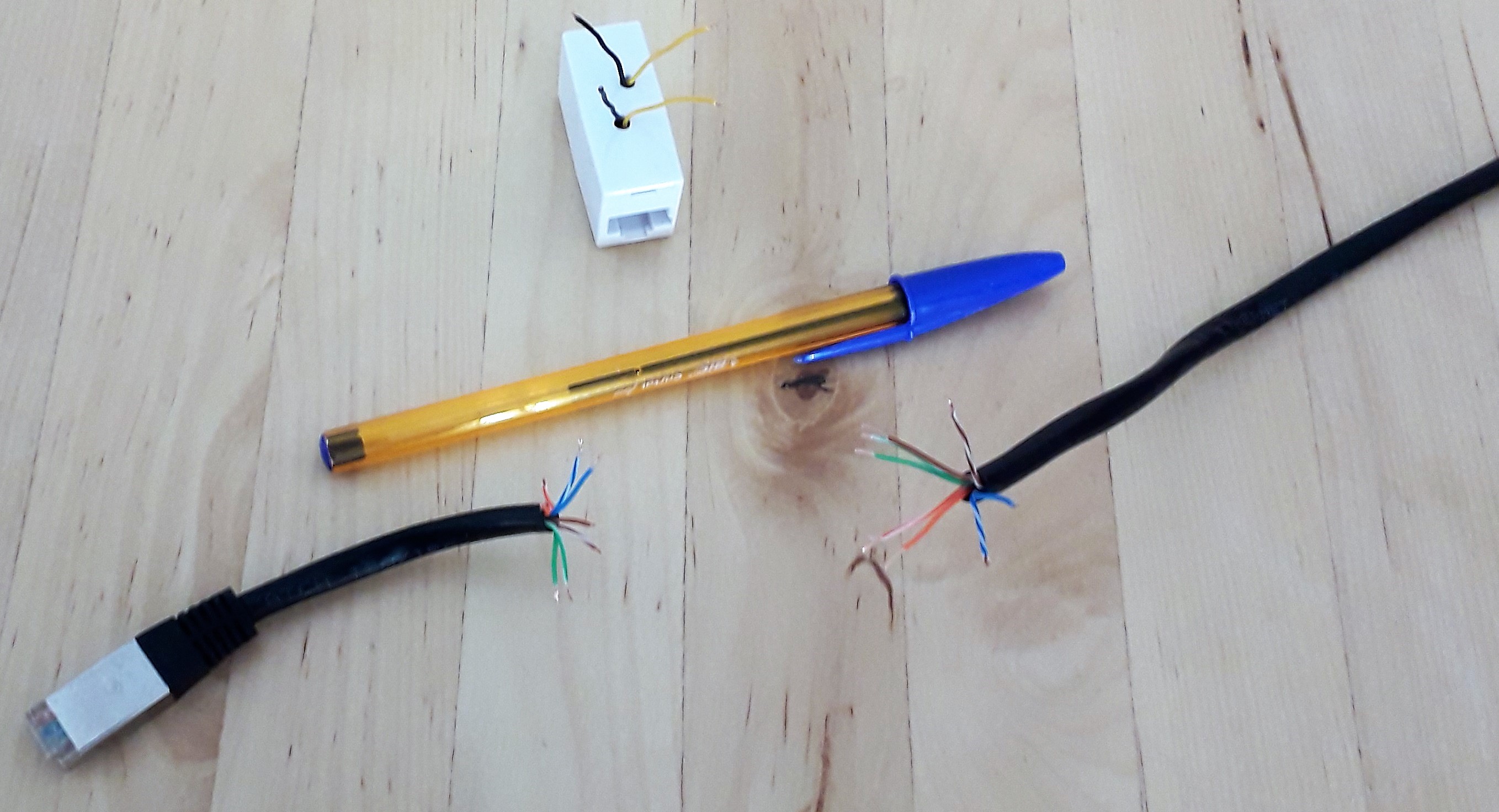
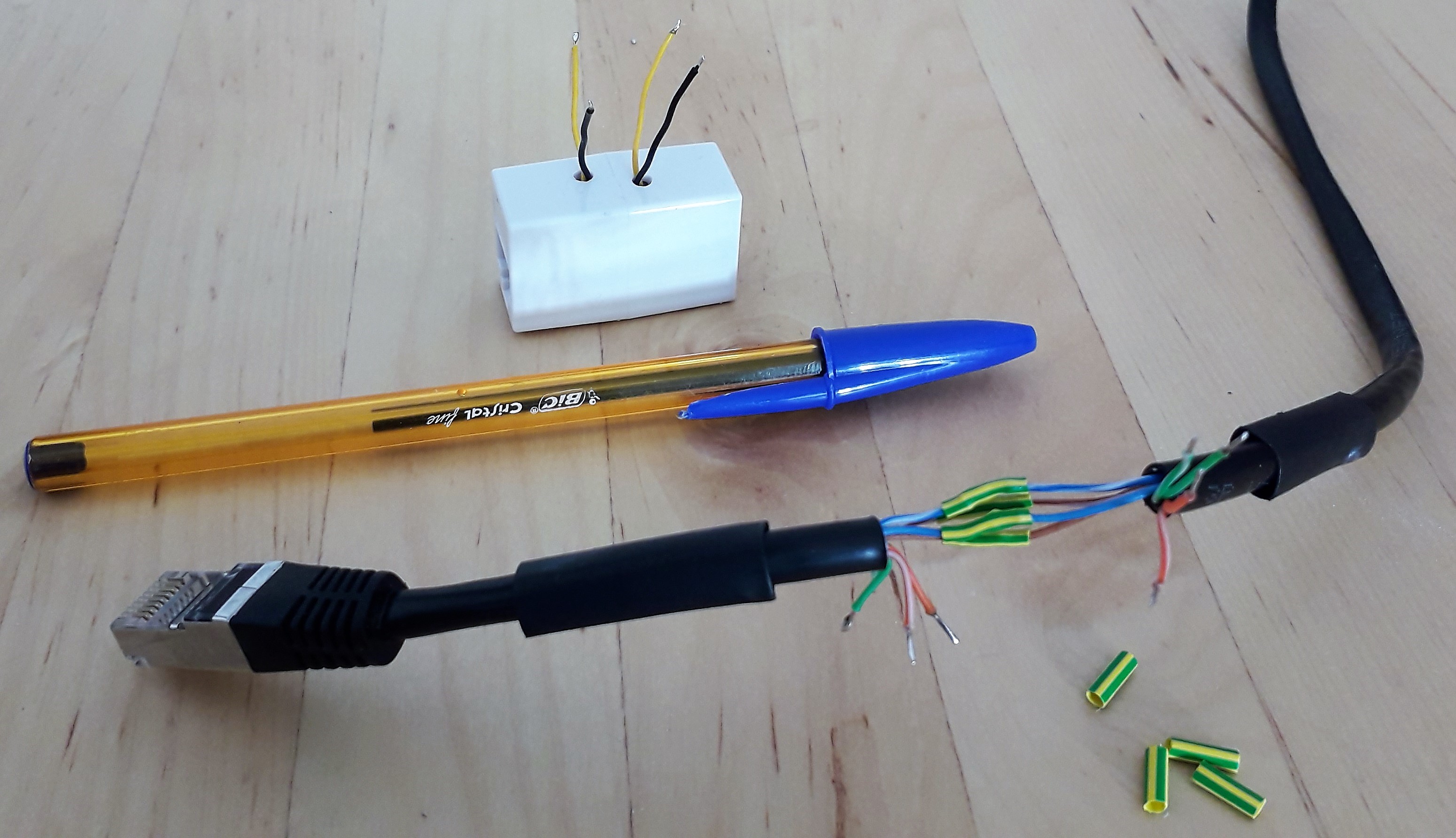
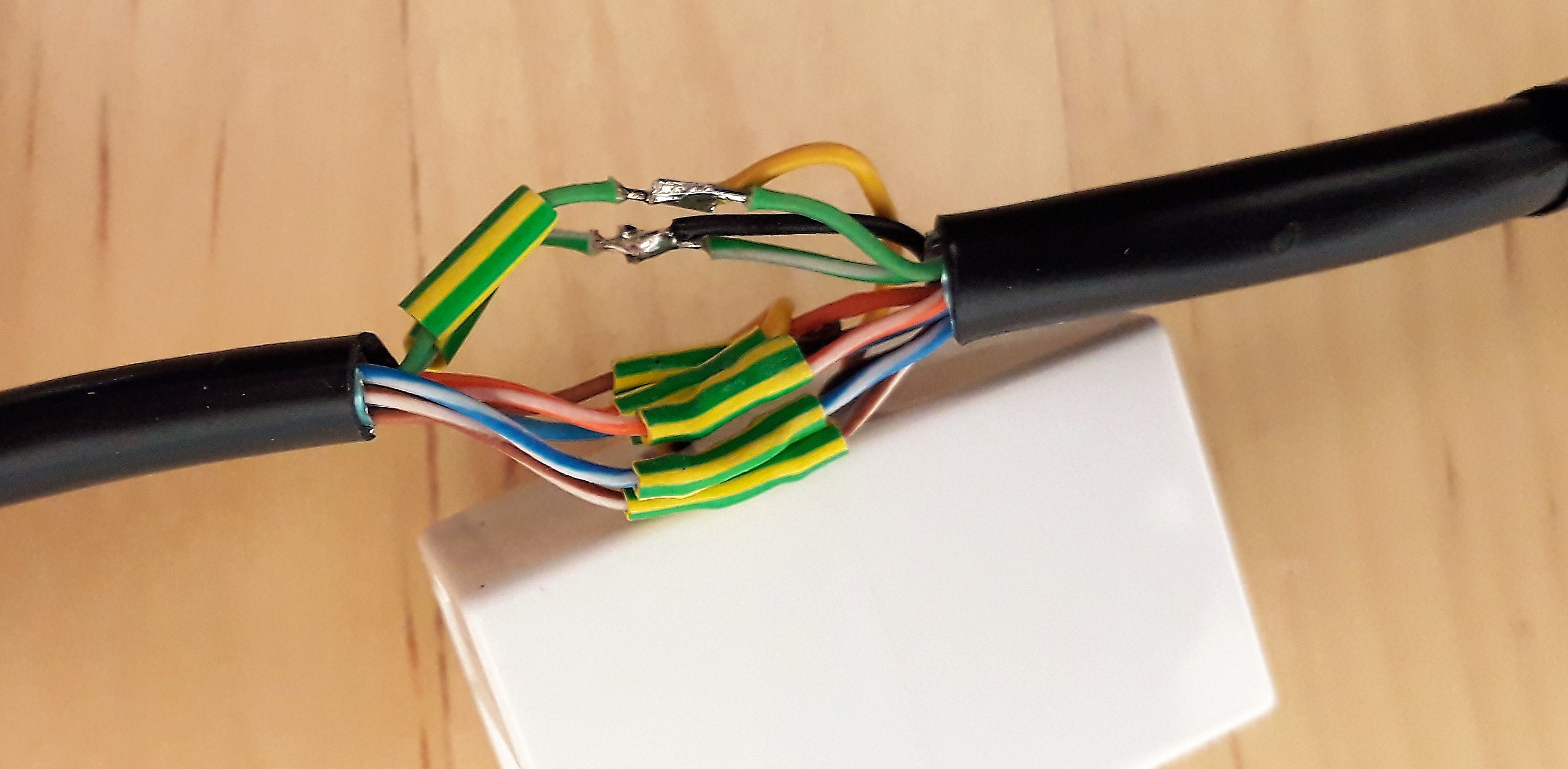
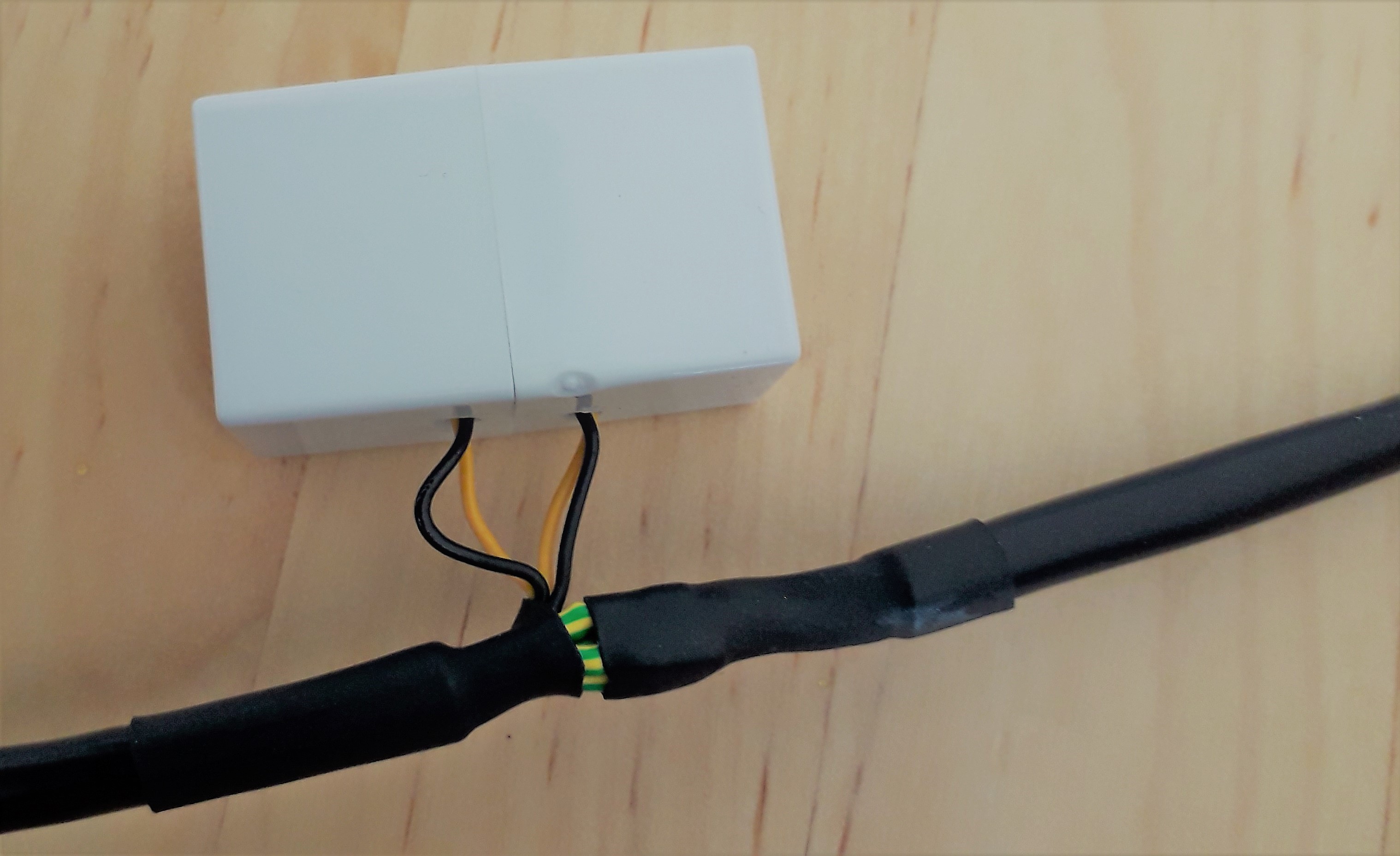
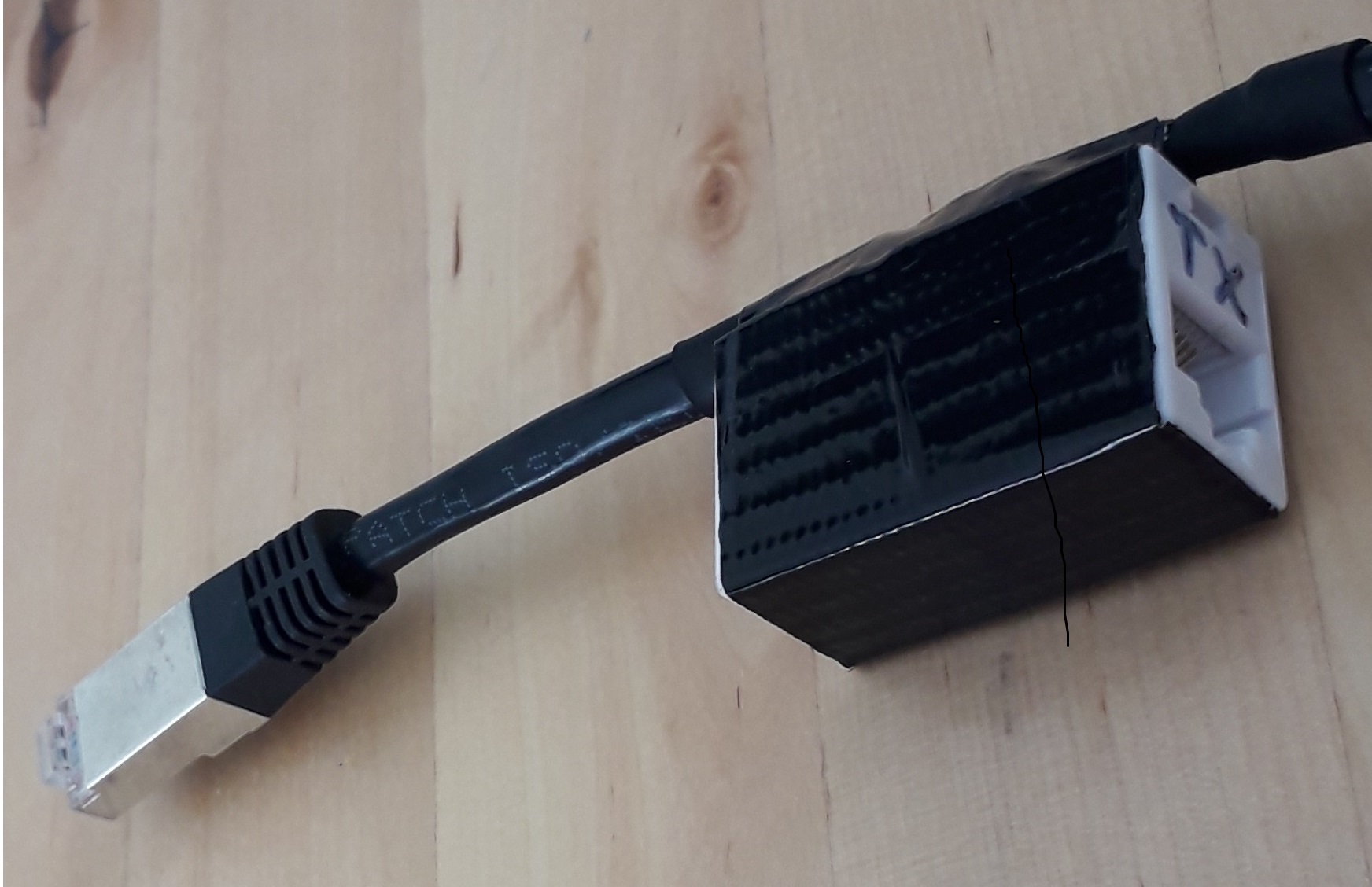
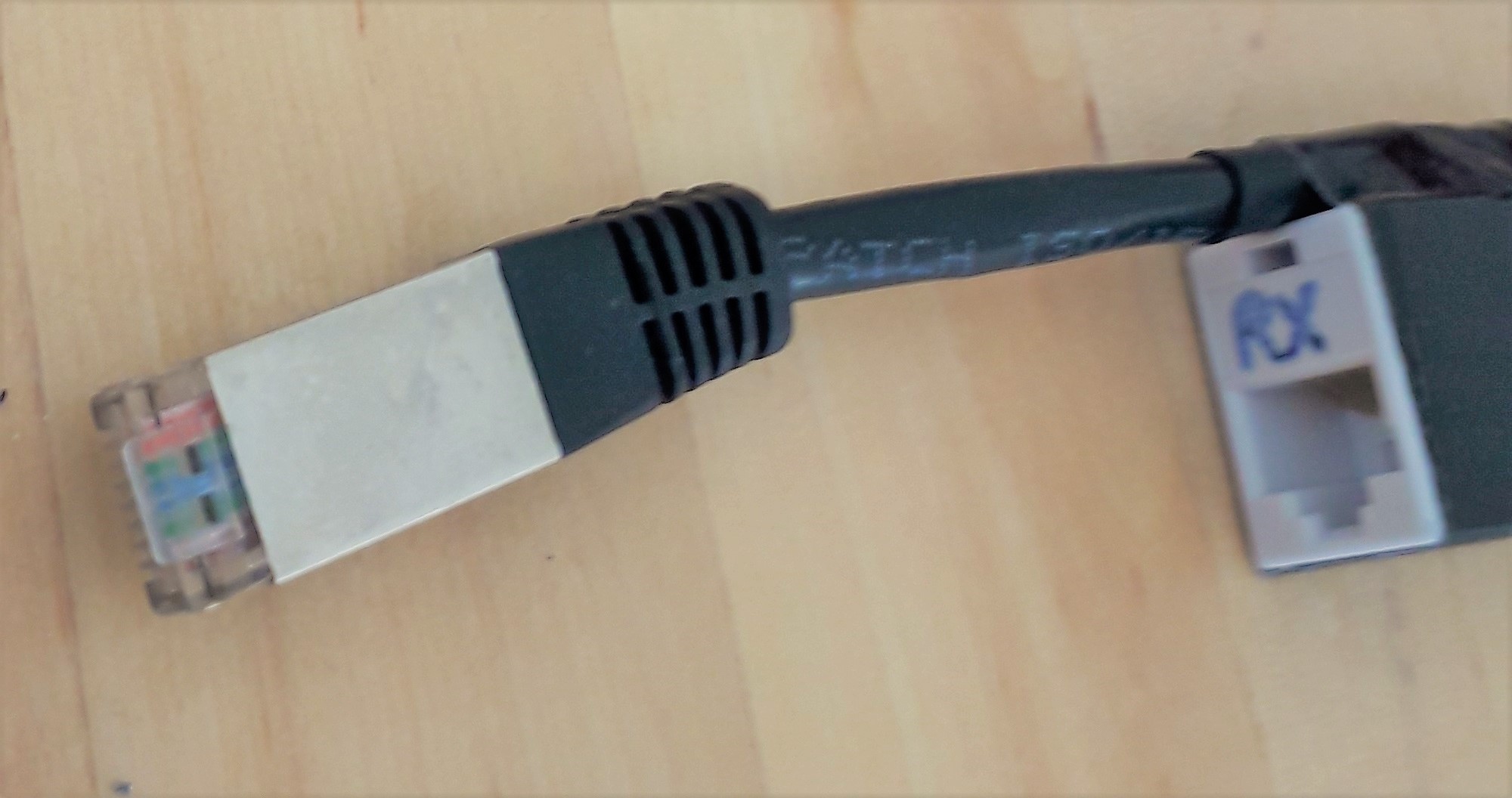
Note: I had found smart to indicate TX (resp. RX) on the tap port from (resp. to) which the data flows. Moreover, I did orient the tap in a mnemonic way (i.e. the TX port "goes away" from the cable end from which the data is TX'd). Unfortunately, it seems that an auto-negotiation take place of who is the RX and the TX pair. As a result, I get random result at each power on!!!